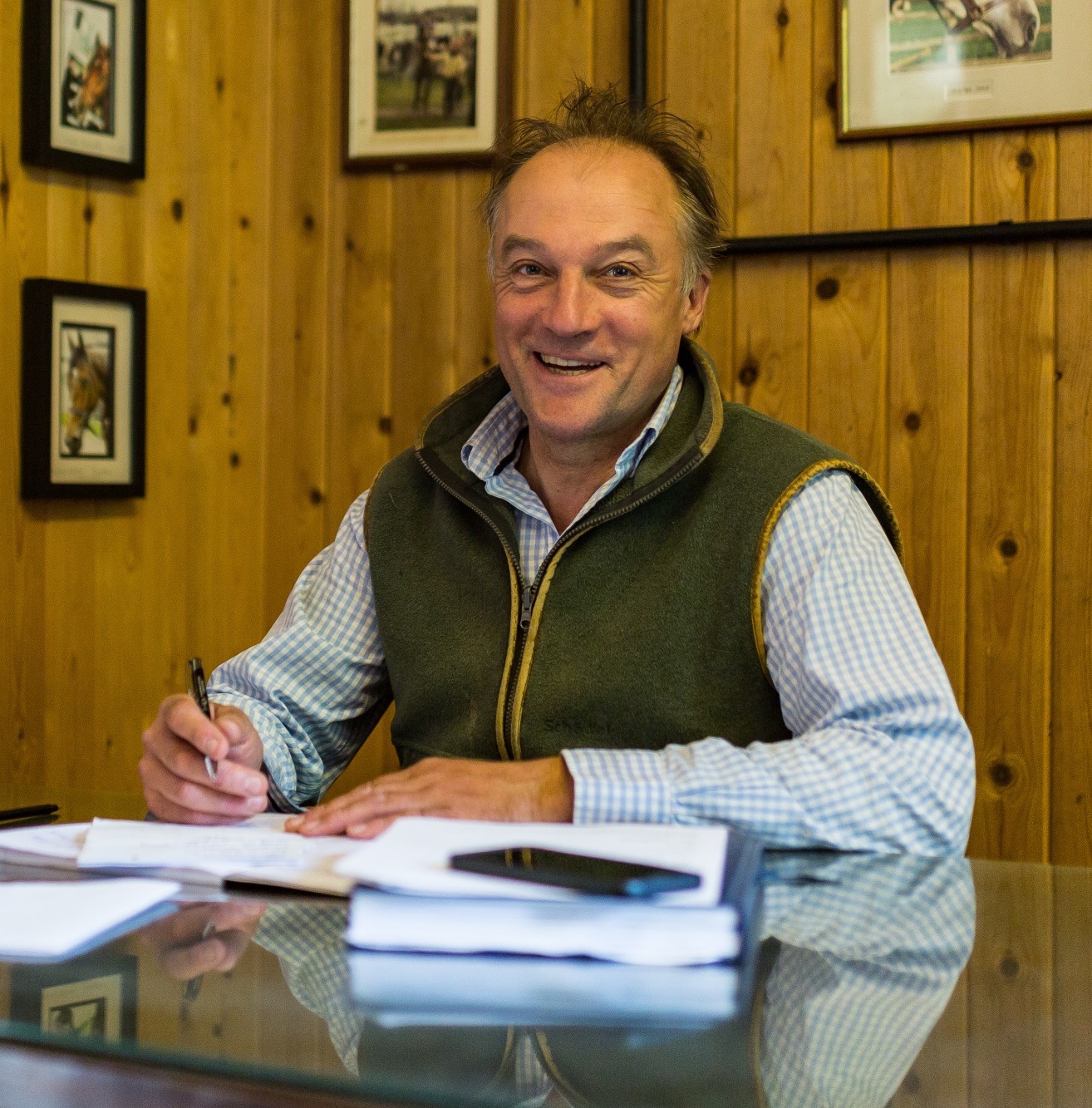
Simon Earle
Trainer
I started riding when I was six years old at the local riding school. My parents bought me one of the riding school ponies — I had a choice between Sam, which was the slowest and you had to kick an awful lot, or Star, which was the fastest and nobody could stop. I chose Star and enjoyed taking him hunting with the Beaufort, but due to his lack of brakes I recieved regular bollockings from the Duke of Beaufort (Master) for being up front too much and would often be seen in large bramble bushes as that was the only way I could stop him! I had terrific fun, though, jumping loads and galloping flat-out in the best hunting country.
I then rode for Topsie Williams, competing her amazing show ponies, and after that rode point-to-pointers for Sue Horton, when I was 12. I evented for Sue, as well, and qualified her pointers with the Beaufort. Her pointers always seemed to win and I always backed them after leading them up — it seemed easy money (although they were always short prices). She was an amazing rider and I remember watching my first race on television with her, at her home in West Kington, when Red Rum won his third Grand National. I was well and truly hooked on racing by then.
Sue then got me a job with Ian Balding, when I was 14 years old, and I worked for Ian during the school holidays. I was surprised that she sent me to Ian’s as it was a big flat yard and I wanted to be a jump jockey, but it was the best thing I have done. I learned respect and how to care for horses at the highest possible standard, looking after and riding some of the best flat horses for some of the wealthiest owners in the world. I loved my time there but eventually sadly had to leave as I wanted to pursue my dream of being a jump jockey.
I had six rides in my first season with Jim Old and then it took off and I lost my claim riding for Ron Hodges, riding my first winner Dicks Folly at Chepstow. I lost my claim too quickly and then it was a real struggle — I went back to being a stable lad but still with the hope of getting going as a jockey. Steadily things turned around thanks to trainers such as Kevin Bishop, for whom I rode at Cheltenham and won on Redgrave Girl, as well as David Barons and Martin Pipe.
Prize Asset, which I rode for Philip Hobbs, was a good horse that helped my career, breaking the 2-mile chase track record at Ascot and just getting beaten at Aintree in the big 2-mile race, plus winning races at Cheltenham.
I then rode a lot for Robert Alner and Stan Mellor, again breaking the track record in a novice chase at Ascot, but this time on Hops and Pops for Robert. I will always be grateful to all those trainers who used me. I was so lucky to have many winners at Cheltenham and rides at the Festival meeting, and I also rode in the Grand National a few times, as well as riding in France for a few summers, for Martin Blackshaw, which was an eye-opener.
I first started training in Dorset, on Rupert Martin’s farm at Mappowder, and from there we won the Grade 2 Diamond Chase at Sandown with Dextra Dove. Dextra Dove won us 19 races and he later ran very well for a long way in the Grand National.
I then set up on my own near Marlborough, before converting The Beeches, in Sutton Veny, from a dairy farm to a racing yard, where we enjoyed success with a small number of horses. I then moved just down the road to Jeremy Giddings’ yard, again enjoying success, including winning nine races with the lovely Red Not Blue. We were nearly full up there when we were struck by a virus that lingered. Horses were even sick in the field, so the winners decreased as well as the number of horses. It was a difficult time.
We are now delighted to have put that behind us with a move back to The Beeches Farm, in Sutton Veny in the autumn of 2018, and are extremely happy to be building the business back up again with confidence, welcoming new horses, and new and past owners back to this fantastic training establishment. One of the proudest things I have done is to discover that we can train and run horses without shoes and, because of that, I cannot remember when we last had a horse do a leg/tendon or break down. This fact is not only good for business but, more importantly, it is fantastic for the horses’ welfare.
Some people may say that I am an "alternative" or "natural method" trainer. I think nothing could be further from the truth. All I am trying to do is be preventative and one step ahead of the game with all the problems and issues that these equine athletes can get. To me, it is about acting on something before it becomes a problem.




 Facebook
Facebook Instagram
Instagram Twitter
Twitter